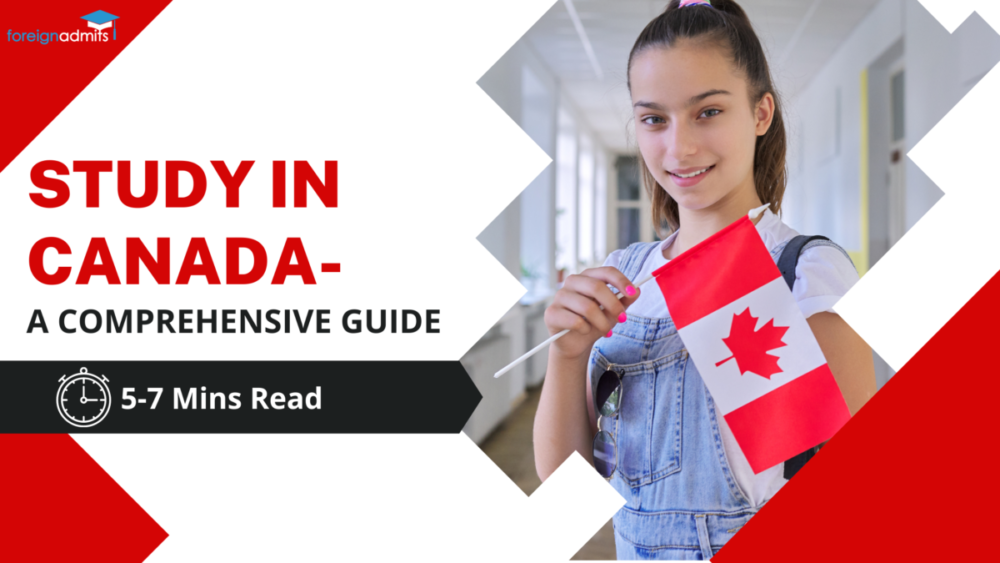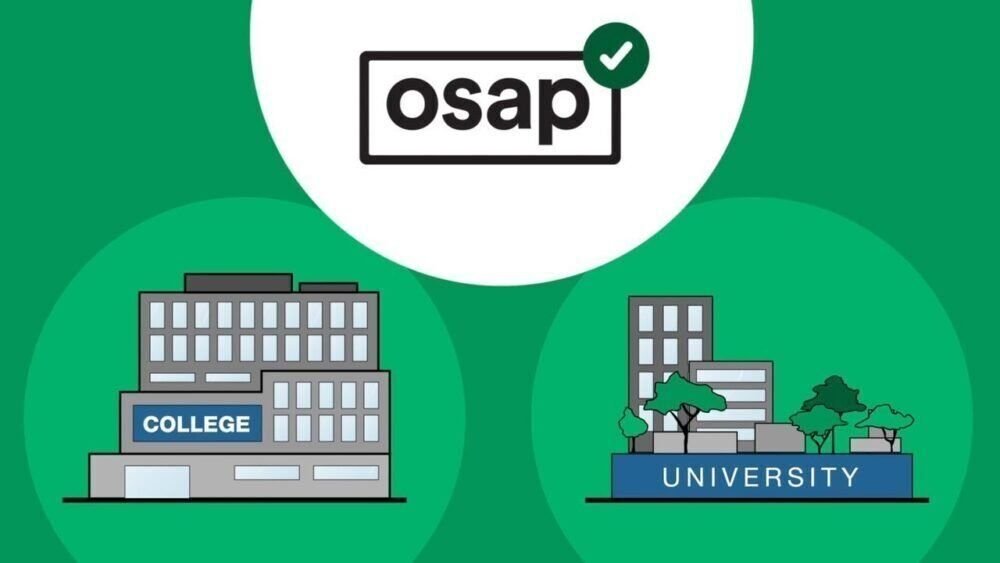
- March 2, 2023
- Admin
- 0
If you’re a student in Ontario looking to finance your education, OSAP can be your saving grace. The Ontario Student Assistance Program (OSAP) is a financial aid program that can provide you with grants, loans, and bursaries to help you pay for your post-secondary education. Applying for OSAP can take some time and effort, but it’s worth it – you’ll be able to focus on your studies without worrying about the financial burden.
Table of Contents
ToggleII. Eligibility criteria
Before you start your application, it’s important to make sure you meet the eligibility criteria. To be eligible for OSAP, you must:
- Be a resident of Ontario
- Be a Canadian citizen, permanent resident, or protected person
- Be enrolled in an eligible program at an eligible post-secondary institution
- Meet certain academic requirements (e.g. passing a certain number of credits)
- Meet certain income requirements (e.g. not earning too much)
- Not have defaulted on a previous student loan or grant
III. Application process
The application process for OSAP can seem overwhelming, but don’t worry – we’ve got you covered. Here’s a step-by-step guide to applying for OSAP:
- Create an account on the OSAP website and fill out the online application. Make sure to have all have the required documentts handy, such as your Social Insurance Number (SIN) and tax information.
- Submit your application and wait for your funding estimate. This estimate will tell you how much funding you’re eligible for and whether it will be in the form of grants, loans, or both.
- Accept or modify your funding offer. You can choose how much of the funding you want to accept or decline, and how much you like in the form of grants versus loans.
- Provide any additional documentation that may be required, such as proof of enrollment.
- Wait for your funding to be released to your school. Once your school confirms your enrollment, your funding will be released to them.
IV. Deadline for application
Deadlines for OSAP applications vary depending on your program and your school. Generally, the deadline to apply for OSAP is 60 days before the end of your study period. It’s essential to submit your application before the deadline to ensure that you receive your funding on time.
V. Types of OSAP funding
OSAP funding can come in grants, loans, or a combination of both. Grants do not need to be repaid, while loans do. The amount of funding you receive depends on a number of factors, including your income and the cost of your education. Once you’re out of school, you’ll have a six-month grace period before you need to start repaying your loans. Repayment options include a standard repayment plan, an extended repayment plan, and an income-based repayment plan.
VI. Additional resources
If you have any questions about OSAP, don’t hesitate to reach out to their customer service team. You can call, email, or chat with them online. They also have a helpful FAQ section on their website, which can provide answers to many common questions. Finally, if you’re struggling with your application, your school’s financial aid office can provide assistance.
OSAP how to apply, how much you can get & what you need to know
The Ontario Student Assistance Program (OSAP) is a financial aid program that helps students in Ontario pay for their post-secondary education. By providing grants, loans, and bursaries, OSAP can make it easier for students to focus on their studies without worrying about financial burdens. Applying for OSAP can take some time and effort, but it’s worth it for the assistance you’ll receive.
OSAP, financial aid, grants, loans, bursaries, Ontario, post-secondary education
II. How to apply for OSAP
To apply for OSAP, you’ll need to follow a few steps:
- Create an account on the OSAP website and fill out the online application. You’ll need to provide personal information, such as your name, address, and Social Insurance Number (SIN), as well as information about your school and program of study.
- You’ll also need to provide information about your financial situation, including your income and expenses. This information is used to determine your eligibility for OSAP and how much funding you’re eligible to receive.
- Once you’ve submitted your application, you’ll receive a funding estimate that outlines how much funding you’re eligible to receive and in what form (grants, loans, or a combination of both).
- You can then accept or modify your funding offer based on your needs and preferences.
OSAP application, personal information, financial situation, funding estimate, grants, loans
III. How much can you get
The amount of funding you can receive through OSAP depends on several factors, including your income, the cost of your education, and whether you’re studying full-time or part-time. Generally, students can receive up to $15,000 in grants and $7,500 in loans per academic year. However, the actual amount you receive may vary depending on your specific situation.
It’s important to note that the funding you receive may also depend on whether you qualify for additional grants or bursaries, such as the Ontario Access Grant or the Indigenous Bursary. These grants and bursaries are available to students who meet specific criteria, such as financial need or Indigenous heritage.
funding, income, cost of education, full-time, part-time, grants, loans, additional grants, bursaries, financial need, Indigenous heritage
IV. What you need to know about OSAP
In addition to understanding how to apply for OSAP and how much funding you can receive, there are a few other essential things to keep in mind:
- Repayment options: After you graduate or leave school, you’ll have a six-month grace period before you need to start repaying your OSAP loans. There are several repayment options available, including a standard repayment plan, an extended repayment plan, and an income-based repayment plan.
- How interest is calculated on loans: OSAP loans accrue interest while you’re in school, but the government covers the interest payments until you graduate. After you graduate, you’ll need to repay both the principal and the interest on your loans.
- Importance of maintaining good academic standing: To continue receiving OSAP funding, you must maintain good academic standing. This means passing a certain number of credits each year and staying in good standing with your school.
- Reporting changes in your circumstances: If your financial or personal circumstances change while receiving OSAP funding, it’s essential to note these changes to OSAP. This can affect your eligibility for funding and how much funding you’re eligible to
VII. Conclusion
Applying for OSAP can be a great way to finance your education without having to worry about the financial burden. By following the steps outlined in this guide, you can ensure you’re eligible for funding and submit your application on time. Remember, the OSAP team is always there to help you if you have any questions or concerns.
Some FAQs about OSAP Application Process
Q: What is OSAP?
A: OSAP stands for the Ontario Student Assistance Program. It is a financial aid program that helps students in Ontario pay for their post-secondary education.
Q: What types of funding are available through OSAP?
A: OSAP provides grants, loans, and bursaries to eligible students. The amount and type of funding you’re eligible to receive will depend on several factors, such as your income, the cost of your education, and whether you’re studying full-time or part-time.
Q: How do I apply for OSAP?
A: To apply for OSAP, you must create an account on the OSAP website and fill out the online application. You’ll need to provide personal information, such as your name, address, and Social Insurance Number (SIN), and information about your school and program of study.
Q: How much funding can I receive through OSAP?
A: The amount of funding you can receive through OSAP depends on a number of factors, including your income, the cost of your education, and whether you’re studying full-time or part-time. Generally, students can receive up to $15,000 in grants and $7,500 in loans per academic year.
Q: What happens after I graduate or leave school?
A: After you graduate or leave school, you’ll have a Several repayment options areeed to start repaying your OSAPSeveral repayment options are options available, including a standard repayment plan, an extended repayment plan, and an income-based repayment plan.
Q: What happens if my financial or personal circumstances change while I’m receiving OSAP funding?
A: If your financial or personal circumstances change while you’re receiving OSAP funding, it’s essential to report these changes to OSAP. This can affect your eligibility for funding and how much funding you’re eligible to receive.
Q: How important is it to maintain good academic standing?
A: To continue receiving OSAP funding, you need to maintain good academic standing. This means passing a certain number of credits each year and staying in good standing with your school. If you don’t meet these requirements, you may become ineligible for OSAP funding in the future.
Q: Are there any additional grants or bursaries available through OSAP?
A: Yes, there are several additional grants and bursaries available to eligible students, such as the Ontario Access Grant and the Indigenous Bursary. These grants and bursaries are designed to provide further financial assistance to students who meet certain criteria, such as financial need or Indigenous heritage.

















